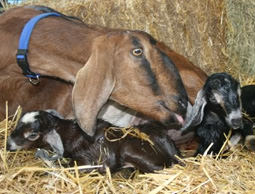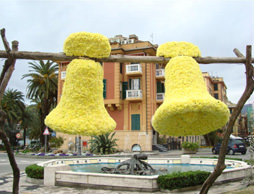
Courtesy Iowa Farm Bureau/American Farm Bureau
Optimism abounds for young farmers like Eric Goodman, one of many recent college graduates who are still finding plentiful job opportunties in agriculture despite the slumping economy.
|
The top three concerns facing young farmers and ranchers in 2010 are profitability, the increase of government climate-change regulations and the impact of activist groups, according to a survey conducted by the American Farm Bureau Federation.
However, 80 percent of those responding to AFBF’s 18th annual survey of young farmers and ranchers say they are more optimistic than they were five years ago, while 82 percent say they are better off than they were five years ago.
“Last year was a tough year economically for many sectors of agriculture,” says AFBF Young Farmers and Ranchers Committee Chair Will Gilmer, a dairy farmer from Lamar County, Ala. “But despite the challenges, the survey shows young farmers and ranchers are optimistic and hopeful. We expect a bright future ahead.”
The informal agricultural survey shows young farmers and ranchers have a high level of concern about government climate-change regulations, with 79 percent of those surveyed expressing high or very high concern.
Additionally, a majority of young farmers and ranchers surveyed expressed concern about the impact of activist groups on their farm and ranch operations. A total of 85 percent were concerned or very concerned about activist groups. Only 7 percent expressed little or no concern.
“Activist groups are becoming more and more vocal, so that is something we always have to keep our eyes on,” Gilmer says. “There is also a great deal of concern about all the ways the government wants to regulate us, whether it’s cap-and-trade or different Environmental Protection Agency rules.”
Young farmers and ranchers ranked their top three challenges: 24 percent ranked overall profitability as the top, followed by government regulations at 23 percent. Two other concerns tied for third on that list: Competition from more established farms and ranches and willingness of parents to share farm-management responsibilities each received 9 percent.
And when it comes to what steps the federal government can take to help farmers and ranchers, 23 percent ranked cutting federal spending No. 1. Boosting U.S. agricultural exports followed with 14 percent of the respondents, and providing greater help to beginning farmers came in third, selected by 11 percent.
A sizable majority [83 percent] of young farmers and ranchers surveyed said they believe farm income should come totally from the marketplace, while 17 percent said farm income should be supplemented by government farm-program payments.
Young farmers and ranchers are also committed environmental stewards, with 68 percent saying that balancing environmental and economic concerns is important for their operations. The survey says 58 percent used conservation tillage on their farms. The majority of those surveyed, 57 percent, plan to plant biotech crops this year, while 43 percent said they do not plan to do so.
The survey also shows the Internet is an important tool for young farmers and ranchers. Nearly 99 percent said they have access to and use the Internet, with the vast majority, 72 percent, saying they have access to a high-speed Internet connection. Only 20 percent rely on slower dial-up connections, and 8 percent turn to more costly satellite connections.
The social media website Facebook is popular with young farmers and ranchers. Nearly three-quarters of those surveyed have a Facebook page. Ten percent of the young farmers say they use the micro blogging website Twitter, while about 12 percent say they post YouTube videos.
Communicating with consumers is also important, with 77 percent saying they consider reaching out to the public about agriculture and their operations an important part of their jobs as farmers and ranchers.
“We’re recognizing that we need to get out there and talk with our consumers, and we are doing so,” Gilmer says. “Social media is just one more avenue for us to reach those who buy and consume what we produce.”
In addition, the Internet is an important tool for the group to access both general and farm news, with 84 percent saying they use the Internet for news. Seventy-two percent said they turn to the Internet to collect buying information for their operations, as well.
The survey also reveals the group’s strong commitment to agriculture, with 96 percent saying they consider themselves life-long farmers or ranchers. They also express hope for the next generation, with 98 percent saying they would like to see their children follow in their footsteps; 85 percent believe their children will be able to follow in their footsteps.
“Young farmers and ranchers share the same traditional hopes and values that have always guided agriculture,” says Bob Stallman, AFBF president. “This survey shows that the future of American agriculture is in caring and capable hands.”
The informal survey of young farmers and ranchers, ages 18 to 35, was conducted during AFBF’s 2010 Young Farmers and Ranchers Leadership Conference in Tulsa, Okla., in February. There were 373 respondents to the informal survey.
















